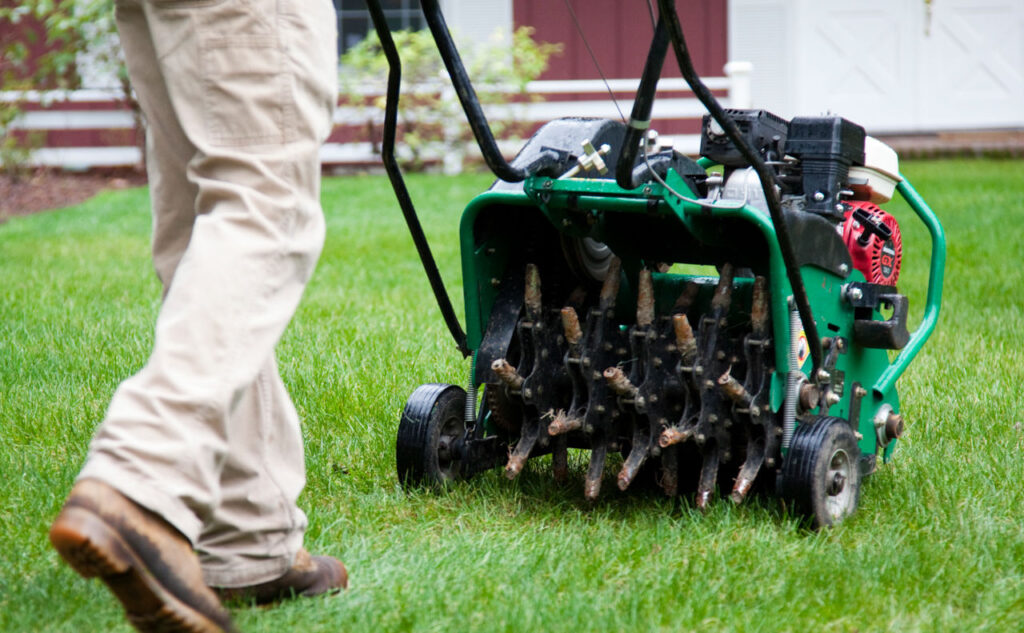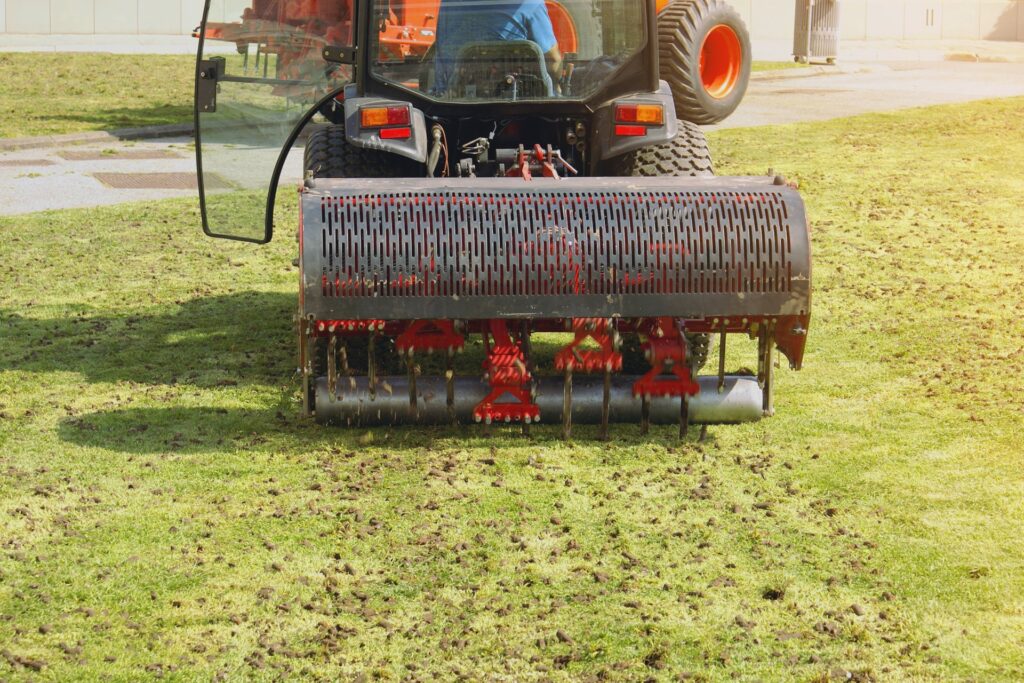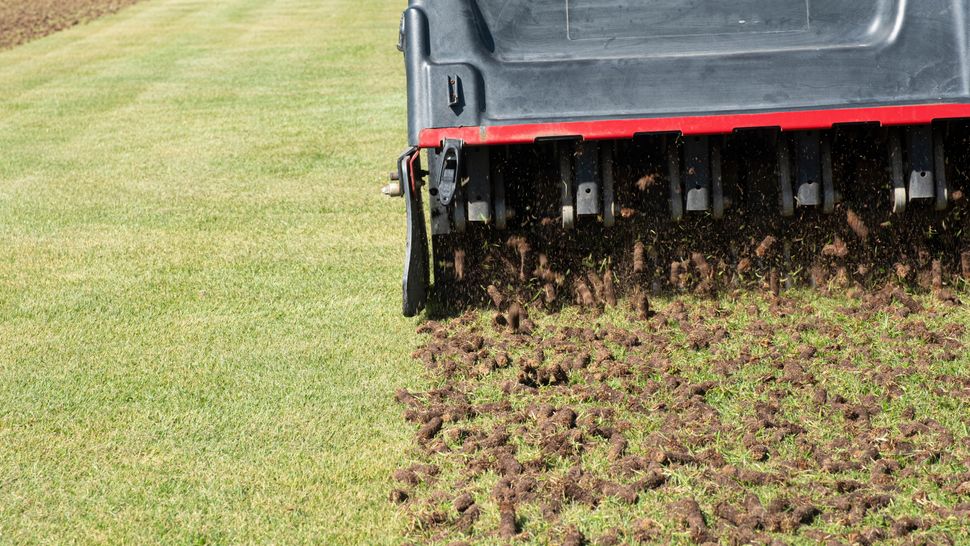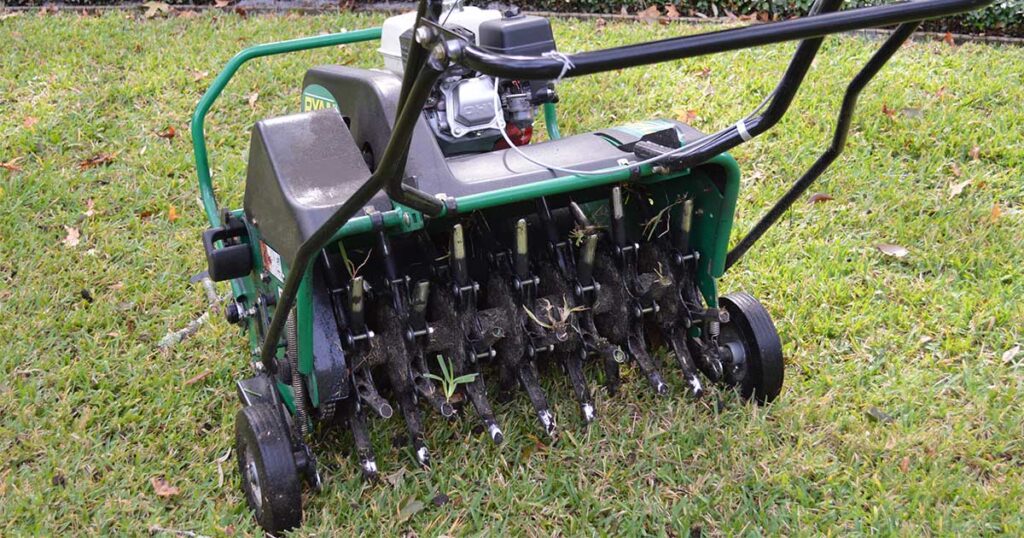Lawn aeration is one of the most beneficial lawn care practices, especially in a place like Austin where the climate and soil type can pose unique challenges for healthy grass growth. If you’re a homeowner looking to boost your lawn’s health, understanding the “why,” “when,” and “how” of lawn aeration is crucial. In this blog, we’ll break down the importance of aeration, when it’s the best time to do it, and how you can aerate your lawn yourself or with the help of professionals in Austin.


Why is Lawn Aeration Important in Austin?
Austin’s climate can be a double-edged sword when it comes to lawn care. While the warm weather promotes lush growth, the soil is often compacted, especially in areas with clay-rich soil, which is common in Central Texas. Compacted soil restricts root growth, water infiltration, and nutrient absorption. Lawn aeration helps combat these issues by creating small holes in the ground, allowing air, water, and nutrients to penetrate deeper into the soil.
Here are some of the key benefits of lawn aeration:
Improved Root Development: Aerating your lawn allows roots to grow deeper, making your grass more resilient and healthy.
Better Water and Nutrient Absorption: With proper aeration, water and nutrients are able to reach the roots more effectively, which can lead to a greener, more vibrant lawn.
Reduced Soil Compaction: Aeration alleviates soil compaction, particularly in clay-heavy soils common in Austin. This leads to better drainage and less pooling of water on the lawn’s surface.
Increased Turf Density: Aerating encourages grass growth by creating space for new grass shoots to emerge and thrive, leading to a denser, fuller lawn.
Enhanced Thatch Breakdown: Lawn aeration can help break down thatch, which is the layer of dead grass and roots that can accumulate on the surface of your lawn, preventing the soil from getting the oxygen it needs.
When Should You Aerate Your Lawn in Austin?
Timing is everything when it comes to lawn aeration. Aerating at the wrong time can disrupt the growth cycle of your grass, potentially causing more harm than good. In Austin, the best time for aeration is during the growing season when your grass is actively growing.
Best Time for Cool-Season Grasses
If your lawn is made up of cool-season grasses (like fescue), the ideal time for aeration is in the early spring or early fall. These grasses grow best when temperatures are mild, making it the perfect window for aerating.
Best Time for Warm-Season Grasses
Most lawns in Austin are dominated by warm-season grasses such as Bermuda, Zoysia, or St. Augustine. The best time for aeration for these types of grasses is late spring to early summer when the grass is actively growing and can quickly recover from the disruption. Aerating your lawn in the fall for warm-season grasses is not recommended, as it may inhibit their ability to establish strong roots before the winter months.
Signs That Your Lawn Needs Aeration
Heavy Foot Traffic: If your lawn experiences a lot of foot traffic, it may be compacted and in need of aeration.
Poor Drainage: If water tends to pool on your lawn or runoff occurs quickly, aeration can help.
Thick Thatch Layer: If you notice a thatch buildup of more than ½ inch, aeration can help break it down.
Stressed Grass: If your grass seems unhealthy or is having difficulty growing, it could be a sign that aeration is needed.
How to Aerate Your Lawn in Austin
Lawn aeration can be done using a manual or mechanical aerator, depending on the size of your lawn and the level of compaction. Here’s a step-by-step guide to aerating your lawn in Austin:
Choose the Right Aerator
Manual Aerators: These are ideal for smaller lawns and involve using a tool to make holes in the soil manually. They can be a bit more labor-intensive but are a good option for smaller yards.
Mechanical Aerators: For larger lawns or those with significant compaction, a motorized aerator (also called a core aerator) is more efficient. These machines remove small plugs of soil from the lawn, creating holes for water and nutrients to enter.
Mow Your Lawn
Before aerating, mow your grass to a shorter height. This will ensure that the aerator can reach the soil more effectively. Aim to mow your lawn to about 2 to 3 inches in height, depending on the grass type.Water Your Lawn
A few days before aeration, water your lawn thoroughly. This softens the soil, making it easier for the aerator to penetrate and reducing the risk of causing too much damage to the roots.Aerate the Lawn
Run the aerator over your lawn in two perpendicular directions (north-south, then east-west) to ensure even coverage. Aim to create holes that are 2 to 4 inches apart.Leave the Soil Plugs
After aerating, leave the soil plugs on your lawn. As they break down, they will help add organic matter back into the soil, further improving the overall health of your lawn.Fertilize and Seed
After aerating, consider fertilizing and overseeding your lawn, especially if you’re looking to promote thicker growth. Aeration creates an ideal environment for new grass seeds to germinate and take root.Water Again
Keep your lawn well-watered after aeration to ensure the newly exposed soil can absorb moisture effectively.
Conclusion
Lawn aeration is a simple yet highly effective way to improve the health of your lawn in Austin. Whether you’re dealing with compacted soil, poor drainage, or unhealthy grass, aeration helps to create a thriving, vibrant lawn. By aerating at the right time and using the correct technique, you’ll be able to enjoy a lush, green lawn year-round. If you’re unsure about doing it yourself, Austin offers many lawn care professionals who can help you get the job done. Happy aerating!


